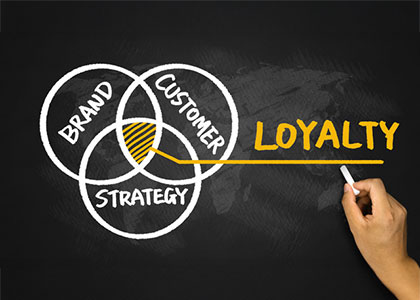
With potential tariffs threatening to raise prices, businesses face the challenge of maintaining customer relationships while navigating financial pressures. Our research suggests that brand loyalty is a powerful buffer against price sensitivity—one that companies would be wise to continue cultivating.
What Recent Price Pressures Have Taught Us
During the recent inflationary period post-Covid, we conducted a series of focus groups for a fast-food client, yielding insights that remain relevant in the current tariff discussion. Our most significant finding: consumers with the strongest brand attachment demonstrated markedly less concern about price increases.
Their most loyal customers would continue to eat at their restaurants even with higher prices. These loyal customers expressed understanding about the economic factors necessitating higher prices and intended to maintain their purchasing patterns. Their relationship with the brand transcended purely financial or transactional considerations.
Recent global research further reinforces these findings. According to a March 2025 UserTesting study surveying 4,000 consumers across the United States, Australia, and the United Kingdom, more than two-thirds (68%) of loyal customers would continue buying from their favorite brands even if prices increased. On average, these consumers indicated willingness to pay 25% more to stick with brands they trust (UserTesting, 2025).
The Nostalgia Connection
Particularly noteworthy in our research was the effectiveness of nostalgia-based marketing approaches in reinforcing brand loyalty. Customers who associated the brand with positive memories from their past reported deeper emotional connections and greater willingness to continue visiting.
The UserTesting study confirms this powerful nostalgia effect, revealing that childhood associations significantly influence purchasing decisions. Nearly two-thirds of Americans (71%) reported being more likely to buy from brands they associate with their childhoods. Even more compelling, approximately two-thirds of American consumers (66%) indicated they would pay extra for discontinued products from brands they loved (UserTesting, 2025).
This nostalgia effect creates a “loyalty shield”—a psychological buffer that reframes price increases as a reasonable accommodation to maintain a valued relationship rather than as a deterrent to purchase.
Strategic Implications for Businesses Raising Prices
As companies prepare for potential tariff-induced price increases, several strategic approaches emerge:
- Continue investing in building loyalty: Building strong brand relationships before price increases become necessary provides critical protection against customer attrition. The UserTesting study reveals that the average loyal customer is dedicated to 5-6 brands, with top loyalty categories including grocery/food (up to 54%), clothing (up to 43%), and electronics (up to 30%).
- Leverage authentic nostalgia: Connecting your brand to positive shared memories creates emotional resilience in customer relationships. The data shows consumers would pay up to 27% more for nostalgic product comebacks (UserTesting, 2025).
- Communicate transparently: Loyal customers appreciate understanding the “why” behind price changes—clear, honest communication about external factors like tariffs helps maintain trust.
- Provide value beyond price: Emphasize the non-monetary benefits your brand delivers, creating a value proposition that transcends cost considerations. According to the UserTesting research, the top reasons for brand loyalty include consistently high product quality (up to 60% globally), positive experiences (up to 59%), and long-term usage (up to 57%).
- Consider tiered approaches: Protect your most loyal customers from the full impact of price increases through loyalty programs, creating a tangible benefit for brand commitment.
Industry-Specific Opportunities
The UserTesting study provides valuable insights on price tolerance across sectors. Brand loyalists reported willingness to pay significantly more for their preferred products in gaming (up to 34% more), jewelry/watches (up to 33% more), and fitness (up to 27% more). Companies in these categories may have additional flexibility when addressing tariff-related price pressures.
Conclusion
While tariff-driven price increases present legitimate business challenges, our research demonstrates that strong brand loyalty provides significant insulation against market disruptions. As Bobby Meixner, Senior Director of Industry Solutions at UserTesting, noted: “During periods of financial strain, consumers are less willing to take chances. They’re focused on value and experience—and they’re willing to spend more if they trust a brand to consistently deliver on its promise” (UserTesting, 2025).
By investing in deeper customer relationships now and leveraging powerful emotional connections like nostalgia, companies can navigate these uncertain waters while maintaining their most valuable asset—their loyal customer base.
References: UserTesting. (2025, March 25). New UserTesting Global Study Finds Brand Loyalty Stronger Than Ever—Even When Prices Rise. Retrieved from https://www.usertesting.com/company/newsroom/press-releases/new-usertesting-global-study-finds-brand-loyalty-stronger-ever-even.
